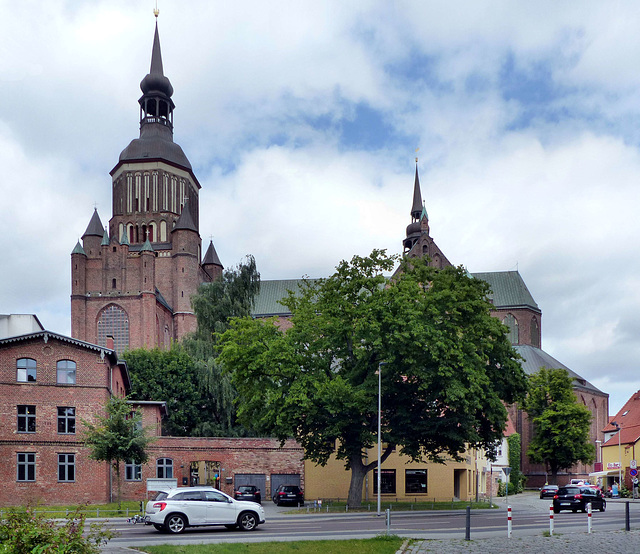Stralsund - St.-Marien-Kirche
Stralsund - Apollonienkapelle
Stralsund - Apollonienkapelle
Stralsund - Rathaus
Stralsund - Nikolaikirche
Stralsund - Nikolaikirche
Stralsund - Nikolaikirche
Stralsund - Nikolaikirche
Stralsund - Nikolaikirche
Stralsund - Nikolaikirche
Stralsund - Nikolaikirche
Stralsund - Nikolaikirche
Stralsund - Nikolaikirche
Stralsund - Nikolaikirche
Stralsund - Nikolaikirche
Stralsund - Nikolaikirche
Stralsund - Nikolaikirche
Stralsund - Nikolaikirche
Stralsund - Nikolaikirche
Stralsund - Nikolaikirche
Stralsund - Nikolaikirche
Stralsund - St.-Jakobi-Kirche
Stralsund - St.-Jakobi-Kirche
Rostock - Kulturhistorisches Museum
Rostock - Kulturhistorisches Museum
Rostock - Kulturhistorisches Museum
Rostock - Kulturhistorisches Museum
Rostock - Kulturhistorisches Museum
Rostock - Kulturhistorisches Museum
Rostock - Kulturhistorisches Museum
Rostock - Kulturhistorisches Museum
Rostock - Kulturhistorisches Museum
Rostock - Kulturhistorisches Museum
Rostock - Kulturhistorisches Museum
Rostock - Kulturhistorisches Museum
Rostock - Kulturhistorisches Museum
Rostock - Marienkirche
Rostock - Marienkirche
Rostock - Marienkirche
Rostock - Marienkirche
Rostock - Marienkirche
Rostock - Marienkirche
Rostock - Marienkirche
Rostock - Marienkirche
Rostock - Marienkirche
Location
See also...
Keywords
Authorizations, license
-
Visible by: Everyone -
All rights reserved
-
65 visits
Stralsund - St.-Marien-Kirche


Slavic Ranen lived on the island of Ruegen and the mainland opposite the island. They were independent heathens up to the middle of the 12th century, and so maybe the last non-Christian people in Central Europe.
In 1168 Danish King Valdemar I defeated the Ranen and destroyed "Jaromarsburg" their main sanctuary. After the Danish victory, the Slavic princes became feudatories of the Danish crown and accepted the Christian faith.
They founded Strale, which prospered because of the rich herring stocks in the waters, many merchants settled here who saw this as their basis for trade. Already in 1234 Slavic Prince Wizlaw I granted the village the town charter (Lübsches Stadtrecht). Stralsund now became an important trading town in the Baltic region, mainly due to settlers from Westphalia. The German settlers clearly outnumbered the Slavic population already around 1300. From 1325 on Stralsund belonged to Pomerania-Wolgast. In the 14th century, it was the most important Hanseatic city in the southern Baltic region after Lübeck.
The 15th century was Stralsund's heyday. Long-distance trade was the most important economic factor. Around 1450, 350 merchants were involved in such trade. In 1488, 50 skippers founded the "St. Marienbruderschaft der Schiffer", the forerunner of the still existing "Stralsund Schiffercompagnie".
As early as 1525, the majority of Stralsund's citizens converted to the Protestant faith. After the Thirty Years' War Stralsund belonged to the Kingdom of Sweden for almost 200 years. In 1815 Stralsund came to Prussia.
-
A "Marienkirche" at this place was first mentioned in 1298. In 1382 the tower collapsed due to the inadequately fortified subsoil and smashed parts of the church building. Shortly afterwards, work began on a new building.
In 1416, the foundation stone was laid for the new massive tower, which rested on a grate and pile structure about 14 m high. The construction of the spire, however, did not begin until 1475. Work on the spire lasted until 1478.
Even from the water, the sailors could see the about 151 metres high spire. Struck by lightning, the pointed spire burnt down in 1647 and was replaced by a broad baroque dome, which was completed in 1708. As a result, the church tower today is about 104 m high.
During the Protestant iconoclasm in 1625 very most of the church´s furnishing was destroyed. During the French occupation (1807-1810) the church was used as a stable.
In 1168 Danish King Valdemar I defeated the Ranen and destroyed "Jaromarsburg" their main sanctuary. After the Danish victory, the Slavic princes became feudatories of the Danish crown and accepted the Christian faith.
They founded Strale, which prospered because of the rich herring stocks in the waters, many merchants settled here who saw this as their basis for trade. Already in 1234 Slavic Prince Wizlaw I granted the village the town charter (Lübsches Stadtrecht). Stralsund now became an important trading town in the Baltic region, mainly due to settlers from Westphalia. The German settlers clearly outnumbered the Slavic population already around 1300. From 1325 on Stralsund belonged to Pomerania-Wolgast. In the 14th century, it was the most important Hanseatic city in the southern Baltic region after Lübeck.
The 15th century was Stralsund's heyday. Long-distance trade was the most important economic factor. Around 1450, 350 merchants were involved in such trade. In 1488, 50 skippers founded the "St. Marienbruderschaft der Schiffer", the forerunner of the still existing "Stralsund Schiffercompagnie".
As early as 1525, the majority of Stralsund's citizens converted to the Protestant faith. After the Thirty Years' War Stralsund belonged to the Kingdom of Sweden for almost 200 years. In 1815 Stralsund came to Prussia.
-
A "Marienkirche" at this place was first mentioned in 1298. In 1382 the tower collapsed due to the inadequately fortified subsoil and smashed parts of the church building. Shortly afterwards, work began on a new building.
In 1416, the foundation stone was laid for the new massive tower, which rested on a grate and pile structure about 14 m high. The construction of the spire, however, did not begin until 1475. Work on the spire lasted until 1478.
Even from the water, the sailors could see the about 151 metres high spire. Struck by lightning, the pointed spire burnt down in 1647 and was replaced by a broad baroque dome, which was completed in 1708. As a result, the church tower today is about 104 m high.
During the Protestant iconoclasm in 1625 very most of the church´s furnishing was destroyed. During the French occupation (1807-1810) the church was used as a stable.
SV1XV, Alexander Prolygin, Paolo Tanino have particularly liked this photo
- Keyboard shortcuts:
Jump to top
RSS feed- Latest comments - Subscribe to the comment feeds of this photo
- ipernity © 2007-2024
- Help & Contact
|
Club news
|
About ipernity
|
History |
ipernity Club & Prices |
Guide of good conduct
Donate | Group guidelines | Privacy policy | Terms of use | Statutes | In memoria -
Facebook
Twitter

Sign-in to write a comment.